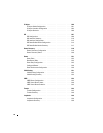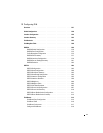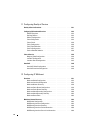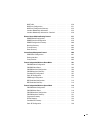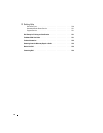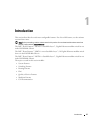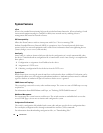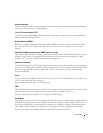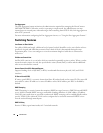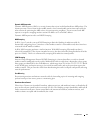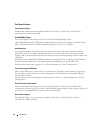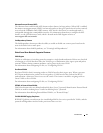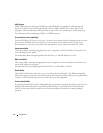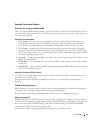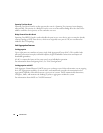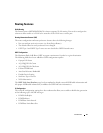
18 Introduction
Port Aggregator
The Port Aggregator feature minimizes the administration required for managing the PowerConnect
M6220/M6348/M8024. When the switch is operating in simple mode, the administrator can map
internal ports to external ports without having to know anything about STP, VLANs, Link Aggregation or
other L2/L3 protocols.
For more information configuring the Port Aggregator feature, see "Using the Port Aggregator Feature."
Switching Features
Low Power on Short Cables
For cables of different length, a different level of power back-off should be set for active link to achieve
good level of signal and stable data transmit. Power back-off level is determined during the auto-
negotiation phase. Users can configure or view the maximum length of cable that is connected to
transceiver.
IPv6 Access Control Lists
An IPv6 ACL consists of a set of rules which are matched sequentially against a packet. When a packet
meets the match criteria of a rule, the specified rule action (Permit/Deny) is taken and the additional
rules are not checked for a match.
Access Control List (ACL) Outbound Support
Supports binding of an acl (IP, MAC, or IPV6) in outbound direction on physical, LAG, and VLAN
interfaces
IP Source Guard (IPSG)
IP source guard (IPSG) is a security feature that filters IP packets based on the source ID. The source ID
may either be source IP address or a source IP address source MAC address pair. IPSG is disabled by
default.
DHCP Snooping
DHCP Snooping is a security feature that monitors DHCP messages between a DHCP client and DHCP
server. It filters harmful DHCP messages and builds a bindings database of (MAC address, IP address,
VLAN ID, port) tuples that are specified as authorized. DHCP snooping can be enabled globally and on
specific VLANs. Ports within the VLAN can be configured to be trusted or untrusted. DHCP servers
must be reached through trusted ports.
DHCP L2 Relay
Permits L3 Relay agent functionality in L2 switched networks.



